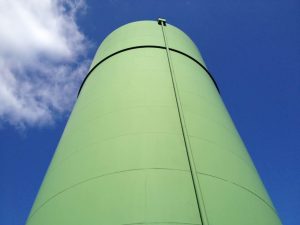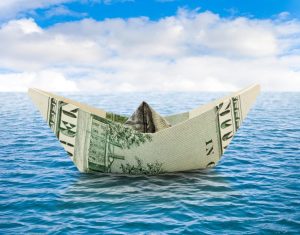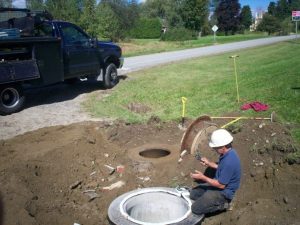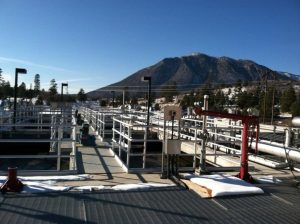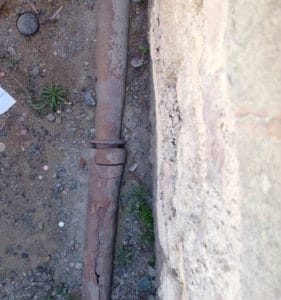 Water mains play a crucial role in modern day civilization and contribute greatly to public health. Water mains have been in use for over 4000 years, and, through the years, huge strides have been made in the engineering and construction of this critical infrastructure.
Water mains play a crucial role in modern day civilization and contribute greatly to public health. Water mains have been in use for over 4000 years, and, through the years, huge strides have been made in the engineering and construction of this critical infrastructure.
Early Mains
The first known underground water mains were constructed by the ancient Minoan civilization between 2200 and 1400 BCE. Constructed of terra cotta, these ancient mains supplied water to the Palace of Knossos. In fact, the ancient Minoans were incredibly advanced for their time, as they also had flushing toilets, sewer piping and drainage, and even rainwater harvesting capabilities. Amazingly enough, the water mains of Knossos were over 1,000 years ahead of their time, as there is no historical evidence of any other water mains until the time of the Roman Empire, between 312 BCE and 500 AD.
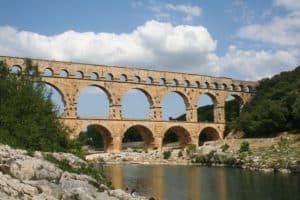
The Roman Empire saw a time of incredible engineering achievement, including the invention of concrete, the construction of bridges and roads, and of course, the innovation of the famous aqueducts. Using gravity to transport water from the outlying hills to the city, these aqueducts, the longest of which was 57 miles, were an incredible engineering accomplishment — and some still stand today. During the early years of the Roman Empire, only the very wealthiest of Romans had water piped directly into their homes via rudimentary water mains, which were constructed of hollowed out logs or drilled stone. Later, water was piped to additional affluent homes via lead pipes. While some argue that the fall of Rome can be attributed to lead poisoning, there is no hard evidence that this theory is true.
Middle Years

Wooden pipes were used in 16th and 17th century Europe, and in 18th and 19th century Canada and United States. To this day, wooden pipes are occasionally unearthed during construction events in Boston, Massachusetts. Wooden pipes did present some problems in that they tended to attract insects and to rot. Also, they imparted a distinct woody flavor to the water.
In the 1800s, lead pipes came into popularity due to their durability and low cost. However, it was eventually recognized that lead water mains were causing lead poisoning, and by the 1920s, an increasing number of municipalities were prohibiting the use of lead pipes to convey drinking water. Long before Flint, Michigan, one of the worst lead poisoning disasters took place in Lowell, Massachusetts in the 1890s, where some of the drinking water tested contained 1,300 times the current EPA drinking water standard. Werner Troesken, an economist at the University of Pittsburgh, authored an entire book about widespread lead poisoning in turn of the century America from lead water mains.
Modern Times

Because lead pipes were recognized to have negative health effects, cast iron water mains because the popular choice in the early 1900s. In use sporadically since 1455 when Germany laid the first recorded cast iron water main in history, cast iron offered a strong, durable, and safe means by which to convey water. Many municipalities on the east coast of America still have cast iron pipes in place that were laid over a century ago. Since their useful life expectancy is 75-125 years, many of these cast iron mains are nearing the end of their useful life or are overdue for replacement. Unfortunately, universal replacement of these failing mains is impossible due to the sheer volume of outdated mains combined with the shrinking budgets and increased regulations that municipalities are currently facing. Therefore, many municipalities are turning to more methodical means of determining which mains should be replaced, such as Advanced Condition Assessment for Pipeline Rehabilitation, which determines the amount of useful life left in a main, and Capital Efficiency Plans™, which identify areas of water systems most in need of rehabilitation, repair, or replacement. Systematically determining utilities’ most critical needs enables efficient use of their limited infrastructure dollars.
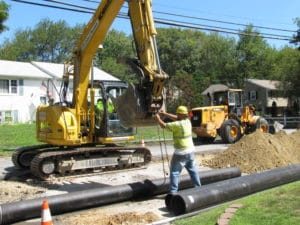
One of the most important modern innovations in water supply is the development of ductile iron in 1948. First used commercially in 1955, ductile iron main is still used today and boasts the longevity of cast iron pipe with the additional benefits of increased flexibility and strength. In addition to ductile iron, modern day water mains are also constructed from polyvinyl chloride (PVC) plastic pipe.
Looking Ahead
Many advances have been made in the conveyance of water since the early days of the Minoans, with several major innovations occurring during the last century. Building on historical knowledge as well as an ever increasing understanding of water chemistry, toxicology, and engineering, water distribution methodology is likely to continue to evolve in ways that will ensure our water is safe, clean, and abundant for future generations.


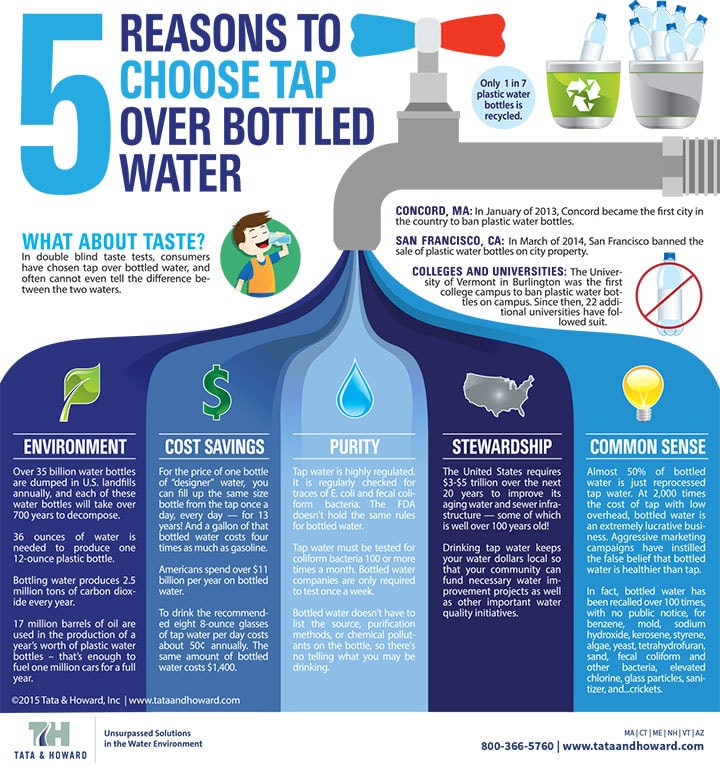
 py by donating both food and money to local food banks to help feed everyone efficiently. On June 5th, Tata & Howard encourages everyone to go through their pantries and donate to a local organization for people who need it. Not only will it help save our environment, but will also help the local people in our own communities.
py by donating both food and money to local food banks to help feed everyone efficiently. On June 5th, Tata & Howard encourages everyone to go through their pantries and donate to a local organization for people who need it. Not only will it help save our environment, but will also help the local people in our own communities. the better. On this World Environment Day, let’s all take time to lend a helping hand to our planet. It is up to us as individuals to take action and better our environment. Taking small steps and making an effort to improve the world in which we live is important not only on World Environment Day, but every day. Even if it is a small step, it is still a step in the right direction.
the better. On this World Environment Day, let’s all take time to lend a helping hand to our planet. It is up to us as individuals to take action and better our environment. Taking small steps and making an effort to improve the world in which we live is important not only on World Environment Day, but every day. Even if it is a small step, it is still a step in the right direction.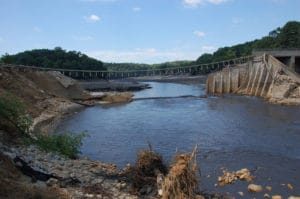
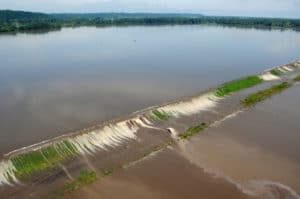
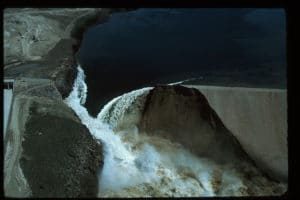
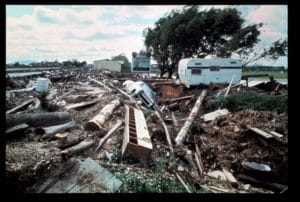
 Memorial Day is the generally accepted start of summer to most New England communities. Pools are opened, grills are wheeled out from storage, flowers are planted, and beaches are officially opened. And while summer is absolutely breathtaking in New England, it is also a time of increased stress on water quality and supply.
Memorial Day is the generally accepted start of summer to most New England communities. Pools are opened, grills are wheeled out from storage, flowers are planted, and beaches are officially opened. And while summer is absolutely breathtaking in New England, it is also a time of increased stress on water quality and supply.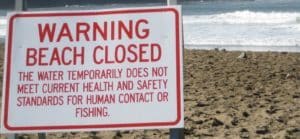 Unfortunately, because of the huge popularity of beaches in the summer, water quality can suffer. Beach closures are common during the summer months, and are a result of pollutants and pathogens entering the water. One of the most common sources of water pollution is human fecal matter from leaky septic systems and sewer overflows. Human waste contains a variety of harmful organisms, including bacteria, viruses, and parasites, that can cause illnesses such as gastroenteritis, hepatitis, and skin infection to humans. Another source of pollution is animal fecal matter from agricultural and stormwater runoff. While runoff contains a number of pollutants including motor oil, pesticides, fertilizers, and trash, arguably the most dangerous and disruptive is animal feces. A single gram of dog feces contains over 23 million parvovirus bacteria in addition to whipworms, hookworms, roundworms, threadworms, giardia, and coccidian. These pathogens and parasites enter waterways through runoff and can have detrimental effects on waterways, aquatic life, and humans.
Unfortunately, because of the huge popularity of beaches in the summer, water quality can suffer. Beach closures are common during the summer months, and are a result of pollutants and pathogens entering the water. One of the most common sources of water pollution is human fecal matter from leaky septic systems and sewer overflows. Human waste contains a variety of harmful organisms, including bacteria, viruses, and parasites, that can cause illnesses such as gastroenteritis, hepatitis, and skin infection to humans. Another source of pollution is animal fecal matter from agricultural and stormwater runoff. While runoff contains a number of pollutants including motor oil, pesticides, fertilizers, and trash, arguably the most dangerous and disruptive is animal feces. A single gram of dog feces contains over 23 million parvovirus bacteria in addition to whipworms, hookworms, roundworms, threadworms, giardia, and coccidian. These pathogens and parasites enter waterways through runoff and can have detrimental effects on waterways, aquatic life, and humans.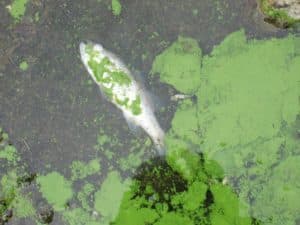
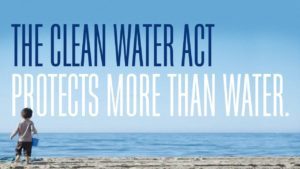 Fortunately, there are policies and regulations in place that directly address seasonal water quality and quantity issues. The EPA, along with other governmental agencies, have enacted several laws that aim to protect the quality of our nation’s beaches:
Fortunately, there are policies and regulations in place that directly address seasonal water quality and quantity issues. The EPA, along with other governmental agencies, have enacted several laws that aim to protect the quality of our nation’s beaches: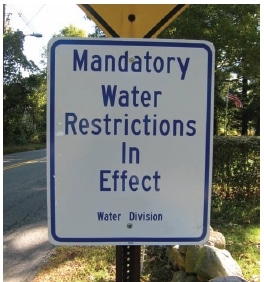 Outdoor water restrictions and bans: Many communities implement water bans in the summer that severely limit or prohibit outdoor watering.
Outdoor water restrictions and bans: Many communities implement water bans in the summer that severely limit or prohibit outdoor watering.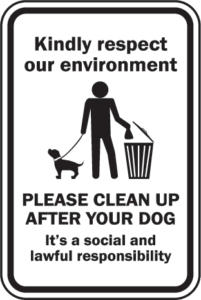 Beaches are one of the most traditional and enjoyable means of summer entertainment for families and individuals, and they provide a plethora of recreational activities for all ages. Protecting our beaches and recreational waters is imperative to the health of our nation’s citizens and economy, and we are fortunate that our nation’s governmental agencies and local communities proactively work to maintain the health of our waters. We as individuals can also help to protect our beaches and waterways by reducing our personal water consumption, cleaning up after our pets, and being mindful of pesticide and fertilizer usage. Together, we can assure that present and future generations are able to enjoy our nation’s beautiful beaches.
Beaches are one of the most traditional and enjoyable means of summer entertainment for families and individuals, and they provide a plethora of recreational activities for all ages. Protecting our beaches and recreational waters is imperative to the health of our nation’s citizens and economy, and we are fortunate that our nation’s governmental agencies and local communities proactively work to maintain the health of our waters. We as individuals can also help to protect our beaches and waterways by reducing our personal water consumption, cleaning up after our pets, and being mindful of pesticide and fertilizer usage. Together, we can assure that present and future generations are able to enjoy our nation’s beautiful beaches.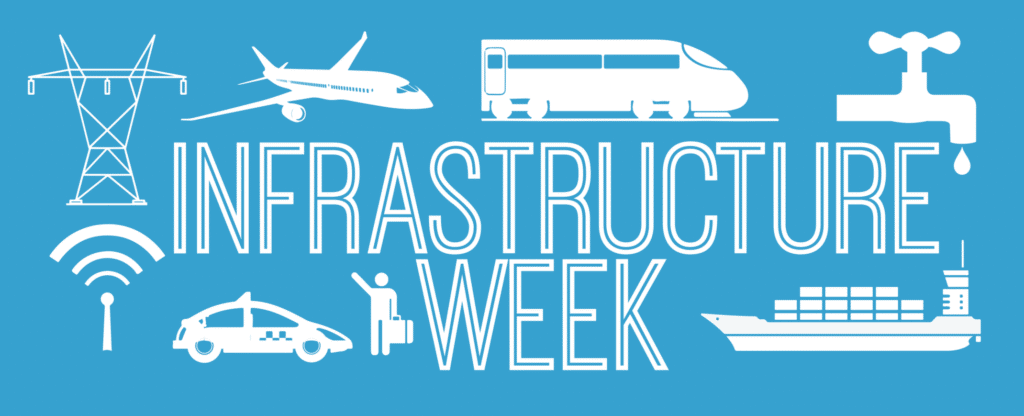 It is scary to realize how complacent our country has become in accepting crumbling infrastructure as the norm. Our international competitors are investing more in high speed rail, modern airports, and bigger shipping ports, while just about every few months, some kind of preventable catastrophic infrastructure event happens in America. Yet our leaders are still not spurred into taking decisive action.
It is scary to realize how complacent our country has become in accepting crumbling infrastructure as the norm. Our international competitors are investing more in high speed rail, modern airports, and bigger shipping ports, while just about every few months, some kind of preventable catastrophic infrastructure event happens in America. Yet our leaders are still not spurred into taking decisive action.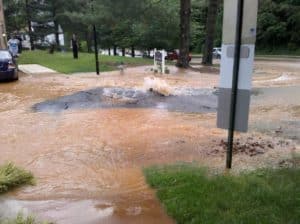

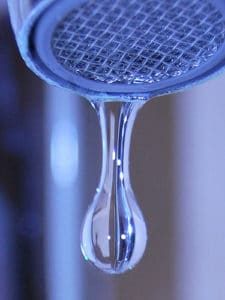 During Infrastructure Week, groups are coming together to recognize progress and leadership at the federal, state, and local levels – and there is much to celebrate. For example, communities throughout New England have been proactive in lead service line replacement, and the Massachusetts Water Resources Authority
During Infrastructure Week, groups are coming together to recognize progress and leadership at the federal, state, and local levels – and there is much to celebrate. For example, communities throughout New England have been proactive in lead service line replacement, and the Massachusetts Water Resources Authority 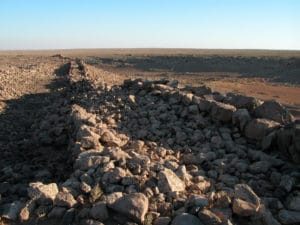 The first known dam to be built is the Jawa Dam, which is actually the largest in a series of dams that are all part of one reservoir system. Located in modern-day Jordan, the Jawa Dam was originally constructed around 3,000 BCE in what was then Mesopotamia. Surprisingly, the Jawa Dam was actually an architectural feat of the times. While most ancient dams were simple gravity dams constructed of gravel and masonry, the Jawa Dam was reinforced with rock fill behind the upstream wall in order to protect the wall from water pressure breach. This safety feature was incredibly innovative for this time period. Unfortunately, the reinforced design was forgotten after the Jawa Dam and was not actually “reinvented” until modern times. The Jawa Dam site is arguably the most important archaeological site in the history of large-scale water projects, and the dam itself was so well designed and constructed that the ancient structure stood until just a few years ago, when it was partially ruined due to physical intervention. In its prime, the Jawa Dam was 15 feet tall, 80 feet long, with a base of 15 feet. It created the Jawa Reservoir that had a capacity of 1.1 million cubic feet.
The first known dam to be built is the Jawa Dam, which is actually the largest in a series of dams that are all part of one reservoir system. Located in modern-day Jordan, the Jawa Dam was originally constructed around 3,000 BCE in what was then Mesopotamia. Surprisingly, the Jawa Dam was actually an architectural feat of the times. While most ancient dams were simple gravity dams constructed of gravel and masonry, the Jawa Dam was reinforced with rock fill behind the upstream wall in order to protect the wall from water pressure breach. This safety feature was incredibly innovative for this time period. Unfortunately, the reinforced design was forgotten after the Jawa Dam and was not actually “reinvented” until modern times. The Jawa Dam site is arguably the most important archaeological site in the history of large-scale water projects, and the dam itself was so well designed and constructed that the ancient structure stood until just a few years ago, when it was partially ruined due to physical intervention. In its prime, the Jawa Dam was 15 feet tall, 80 feet long, with a base of 15 feet. It created the Jawa Reservoir that had a capacity of 1.1 million cubic feet.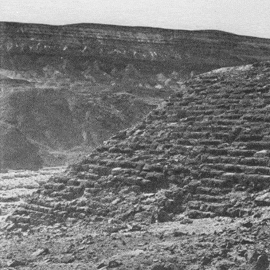
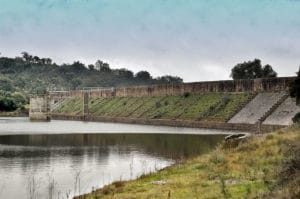

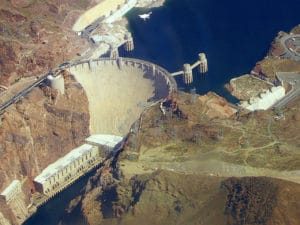
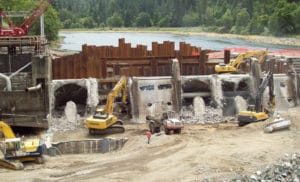
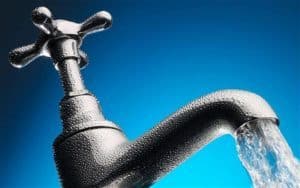 Water utilities today are faced with a unique set of difficulties. Population growth has resulted in unprecedented demand while climate change has caused supply to dwindle. Increased regulations have forced utilities to invest more and more capital into treatment while budgets have shrunk. In addition, our nation’s aging infrastructure has forced water utilities to heavily invest in repair and replacement of the distribution system. Therefore, it has become critical that utilities utilize the most cost-effective and efficient methodologies in order to maintain and improve their water systems.
Water utilities today are faced with a unique set of difficulties. Population growth has resulted in unprecedented demand while climate change has caused supply to dwindle. Increased regulations have forced utilities to invest more and more capital into treatment while budgets have shrunk. In addition, our nation’s aging infrastructure has forced water utilities to heavily invest in repair and replacement of the distribution system. Therefore, it has become critical that utilities utilize the most cost-effective and efficient methodologies in order to maintain and improve their water systems.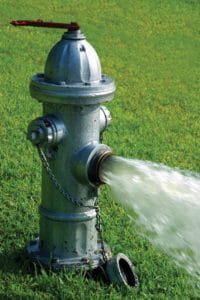
 Because demand is highest in summer and would make flushing impractical, and low temperatures in winter would cause unsafe conditions from flushed water freezing on roadways and sidewalks, flushing is typically performed in the spring and fall. Currently, Tata & Howard is assisting the communities of Haverhill and Manchester By The Sea, MA and Norwalk First Taxing District in Norwalk, CT with their annual UDF Programs. Both AWWA and MassDEP recommend that UDF be performed on an annual basis, at a minimum. If a distribution system is too large to perform UDF annually, flushing should instead be scheduled in rotation so that all parts of the distribution system are exercised on a regular basis.
Because demand is highest in summer and would make flushing impractical, and low temperatures in winter would cause unsafe conditions from flushed water freezing on roadways and sidewalks, flushing is typically performed in the spring and fall. Currently, Tata & Howard is assisting the communities of Haverhill and Manchester By The Sea, MA and Norwalk First Taxing District in Norwalk, CT with their annual UDF Programs. Both AWWA and MassDEP recommend that UDF be performed on an annual basis, at a minimum. If a distribution system is too large to perform UDF annually, flushing should instead be scheduled in rotation so that all parts of the distribution system are exercised on a regular basis. Earth Day, which falls on April 22 each year, is celebrated globally by over one billion people and is largely credited with being the catalyst for the modern environmental movement. The first Earth Day was celebrated in the United States in 1970, and was quickly followed by passage of the
Earth Day, which falls on April 22 each year, is celebrated globally by over one billion people and is largely credited with being the catalyst for the modern environmental movement. The first Earth Day was celebrated in the United States in 1970, and was quickly followed by passage of the 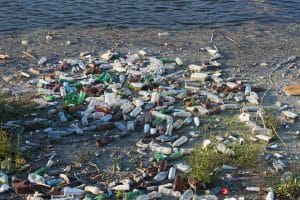
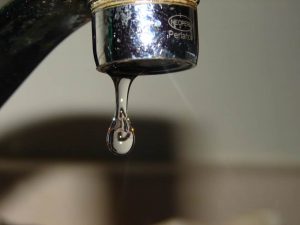 4. Repair leaky faucets and toilets
4. Repair leaky faucets and toilets
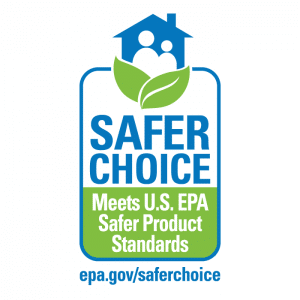


 While cell phone usage is admittedly the biggest culprit, distracted driving includes ANY activity that diverts a driver’s attention. The three main types of distraction are as follows:
While cell phone usage is admittedly the biggest culprit, distracted driving includes ANY activity that diverts a driver’s attention. The three main types of distraction are as follows: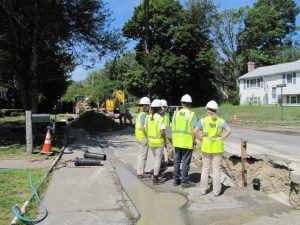
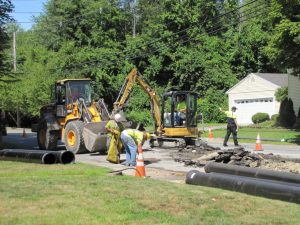
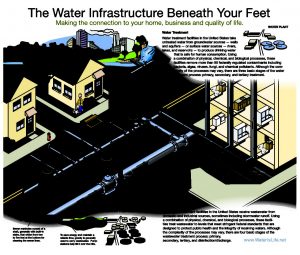
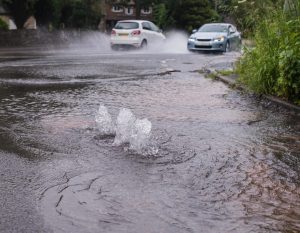
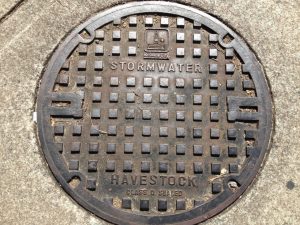 Established by the 1987 amendments to the Clean Water Act, the CWSRF Program is a federal-state partnership that provides a permanent, independent source of low-cost financing to communities for a wide range of water quality infrastructure projects. The program is a powerful partnership between EPA and the states that gives states the flexibility to fund a range of projects that address their highest priority water quality needs.
Established by the 1987 amendments to the Clean Water Act, the CWSRF Program is a federal-state partnership that provides a permanent, independent source of low-cost financing to communities for a wide range of water quality infrastructure projects. The program is a powerful partnership between EPA and the states that gives states the flexibility to fund a range of projects that address their highest priority water quality needs.